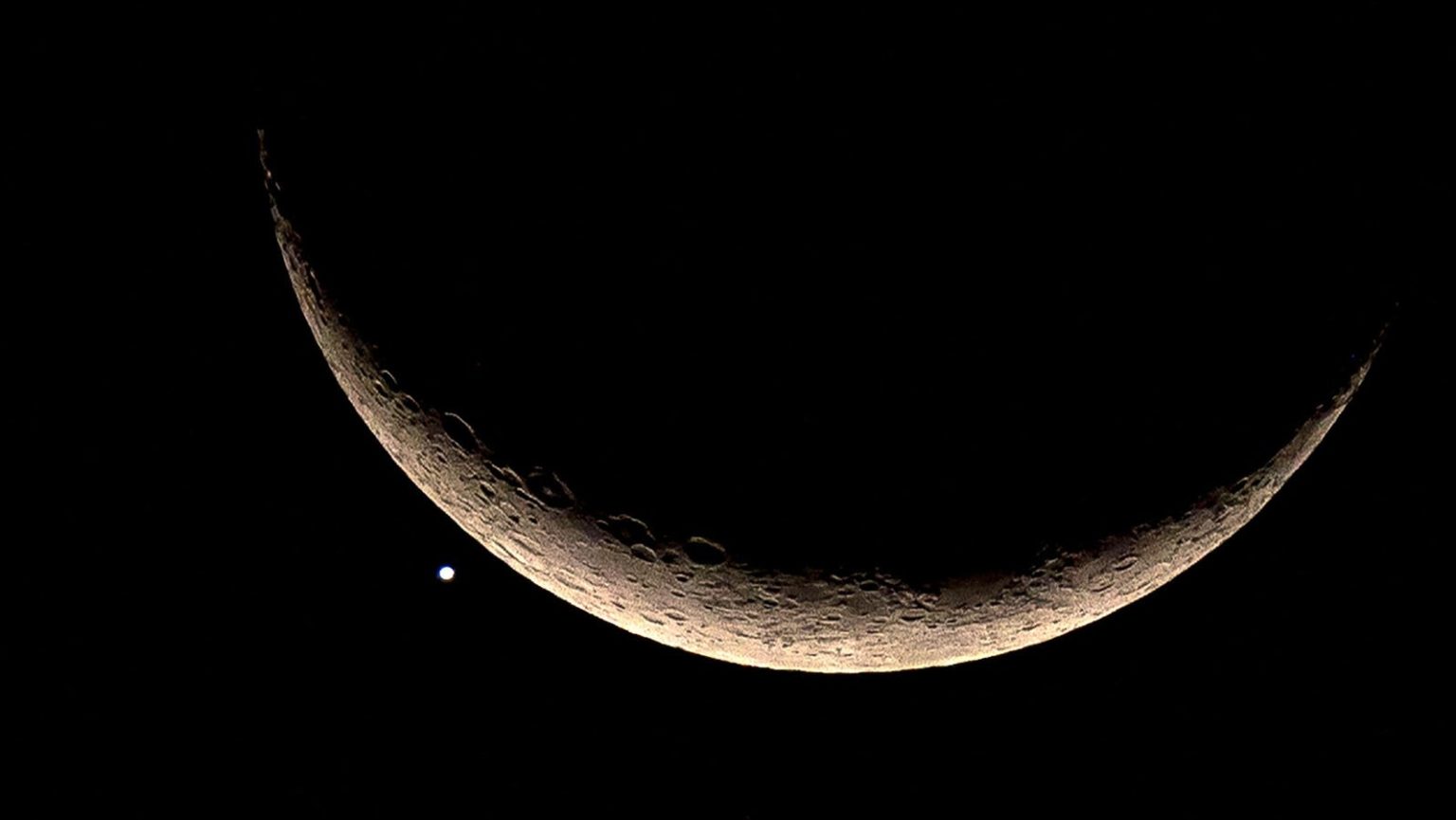This week, stargazers in North America can look forward to the upcoming total solar eclipse on April 8. Leading up to the eclipse, observers can watch the moon as it wanes each night, getting closer to the sun before completely blocking it on Monday. On Sunday, April 7, a slim crescent moon will be visible in the east, near a trio of planets, and will later occult Venus.
On Monday, April 1, the Last Quarter Moon will rise after midnight, marking the start of 10 nights of dark skies perfect for eclipse-chasing vacations. On Friday, April 5, early risers can catch a 15%-lit waning crescent moon near Mars and Saturn in the east-southeast sky. The following day, a crescent moon just 8%-lit will be below Saturn and Mars, with bright Venus shining in the east as the sun rises.
Sunday, April 7 presents a unique opportunity to witness the Pre-Eclipse Moon occult Venus before it eclipses the sun on Monday. The celestial event will be challenging to see due to its proximity to the eastern horizon, but keen observers may catch a glimpse of the 3%-lit crescent moon near Venus. Additionally, the moon will eclipse Venus in daylight around midday, visible from certain locations with the aid of a telescope.
For those planning to observe the total solar eclipse, the best stargazing opportunities arise around the new moon when the night sky is at its darkest. In the nights around the eclipse, stargazers can experience optimal viewing conditions as the moon is close to the sun and not visible at night. Prime locations for observing the eclipse include Texas Hill Country, Ouachita Mountains in Arkansas, southeast Missouri, northeast New York, and northern Maine, all of which boast dark skies and stunning views during totality.
As the total solar eclipse approaches, many are focused on obtaining solar eclipse glasses for safe viewing. However, the real spectacle lies in experiencing totality within the narrow path of totality, where the moon completely blocks the sun. Within this path, observers can witness the solar corona and pink prominences around the sun’s edge, making binoculars a valuable tool for capturing close-up views of these phenomena. It is important to exercise caution and only use binoculars during totality or with special solar filters for viewing the partial phases. Stargazers should consult online planetariums for accurate location-specific information on celestial events and timings.


